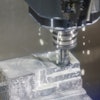by Daniel Wagner and Marcy Gordon, AP Business Writers
WASHINGTON (AP) — Regulators need more time to figure out what caused last week's stock market plunge, the head of the Securities and Exchange Commission told a congressional panel Tuesday.
SEC Chairman Mary Schapiro said her agency has yet to pinpoint the reason for the sell-off that sent the Dow Jones industrial average down nearly 1,000 points in less than half an hour, stunning Wall Street and Washington.
"We will move as quickly as we can but I can't give you a final date," Schapiro said at a hearing examining the historic market drop.
"We are unable to point to a single event which could be the sole cause" at this point in the SEC's investigation, Schapiro testified.
But some causes have been ruled out: The agency's review found no evidence of terrorist activity or computer hacking. There also was no evidence "that this was done in any kind of a malicious way," Schapiro told the House Financial Services subcommittee on capital markets.
She said the scenario of a "fat finger" error, involving the typing of billions of shares rather than the intended millions, can't yet be definitely ruled out as a possible cause of the disruption but that the investigations by the SEC and the exchanges hadn't found such an error.
Schapiro said establishing a stronger, more uniform system — across all exchanges — for slowing trading during periods of fierce price swings would help.
Six major U.S. securities exchanges on Monday agreed in principle to a uniform system of "circuit breakers," which could slow trading during sharp market swings. Most of the 50 U.S. exchanges regulate themselves and design their own tools for slowing or halting trading.
Schapiro and her fellow SEC commissioners will review the recommendations submitted by the exchanges for a marketwide system of circuit breakers, SEC spokesman John Nester said after the hearing. He said the exchanges also have provided suggestions "for handling clearly erroneous trades in a more objective and transparent manner."
The SEC commissioners and staff "will review the recommendations and work with the exchanges ... over the next few days," Nester said in a statement.
The May 6 market free fall highlighted the growing complexity and diversity of the securities market. Upstart electronic trading platforms now compete with the traditional exchanges and powerful computers give traders a split-second edge in buying or selling stocks.
The plunge also underscored the growing importance of trading in options, which allow investors to trade based on expectations for a particular stock, or group of stocks, to rise or fall, rather than simply trading the underlying stock.
"The interconnections among markets ... have grown immensely more complex over the past few years," Schapiro told the subcommittee. "Orders in one stock directed to one market can now ricochet to other markets, and trigger (mathematical) executions in other stocks and derivatives in milliseconds."
Schapiro and Gary Gensler, chairman of the Commodity Futures Trading Commission, pointed to a rapid drop in prices during last Thursday's tumult for the "E-Mini June," a popular security that tracks the expected value of the Standard & Poor's 500 Index for June 2010. That was believed to lead to steep price declines for related stocks, such as that of Procter & Gamble Co.
Gensler testified that one trader took a large short position in the E-Mini, selling "on the way down and (continuing) to do so even as the price level recovered." That could indicate that the trader, who wasn't named, was betting on a price decline.
Senior officials of the New York Stock Exchange, the Nasdaq stock market and the Chicago Mercantile Exchange, testifying at the hearing, said they were working out a formal blueprint.
Lawmakers and Schapiro acknowledged that last Thursday's plunge has undermined confidence in the financial markets.
"We must quickly analyze what happened and embrace reforms in order to restore market integrity and promote investor confidence," said Rep. Paul Kanjorski, D-Pa., the panel's chairman. He noted that the drop wiped out more than $1 trillion in the market value of stocks before the market indexes recovered. As a result, "some investors lost mightily," Kanjorski said, including some retail investors whose trades cleared at the wrong moment during the cascade.
The officials of the exchanges told the lawmakers they are capable of policing themselves. But they agreed that broad changes to the system of overseeing the financial exchanges are needed.
Larry Leibowitz, chief operating officer for the NYSE, said a more uniform system of circuit breakers would slow trading when share prices plummet. And he suggested that one self-regulator with access to all trading data might best oversee all the exchanges. The vast network of self-regulators has made it harder for SEC officials to investigate the chaotic trading, Leibowitz said.
"Any single exchange has access to only the data from trades sent to or executed on that exchange," Leibowitz said. "When a trading problem occurs . . . there is no central mechanism to coordinate a market-wide response."
During the plunge, the NYSE slowed trading but other exchanges traded elsewhere, said Eric Noll, executive vice president of Nasdaq's parent company. Those events contributed to the rapid sell-off, he testified. Another trigger was "aggressive, nervous selling" by investors who believed stock prices would continue to fall, Noll said.
The investigation is ongoing and the NYSE continues to deliver trading data to the regulators, but "chances are there isn't going to be a smoking gun," Leibowitz told reporters after the hearing.


















